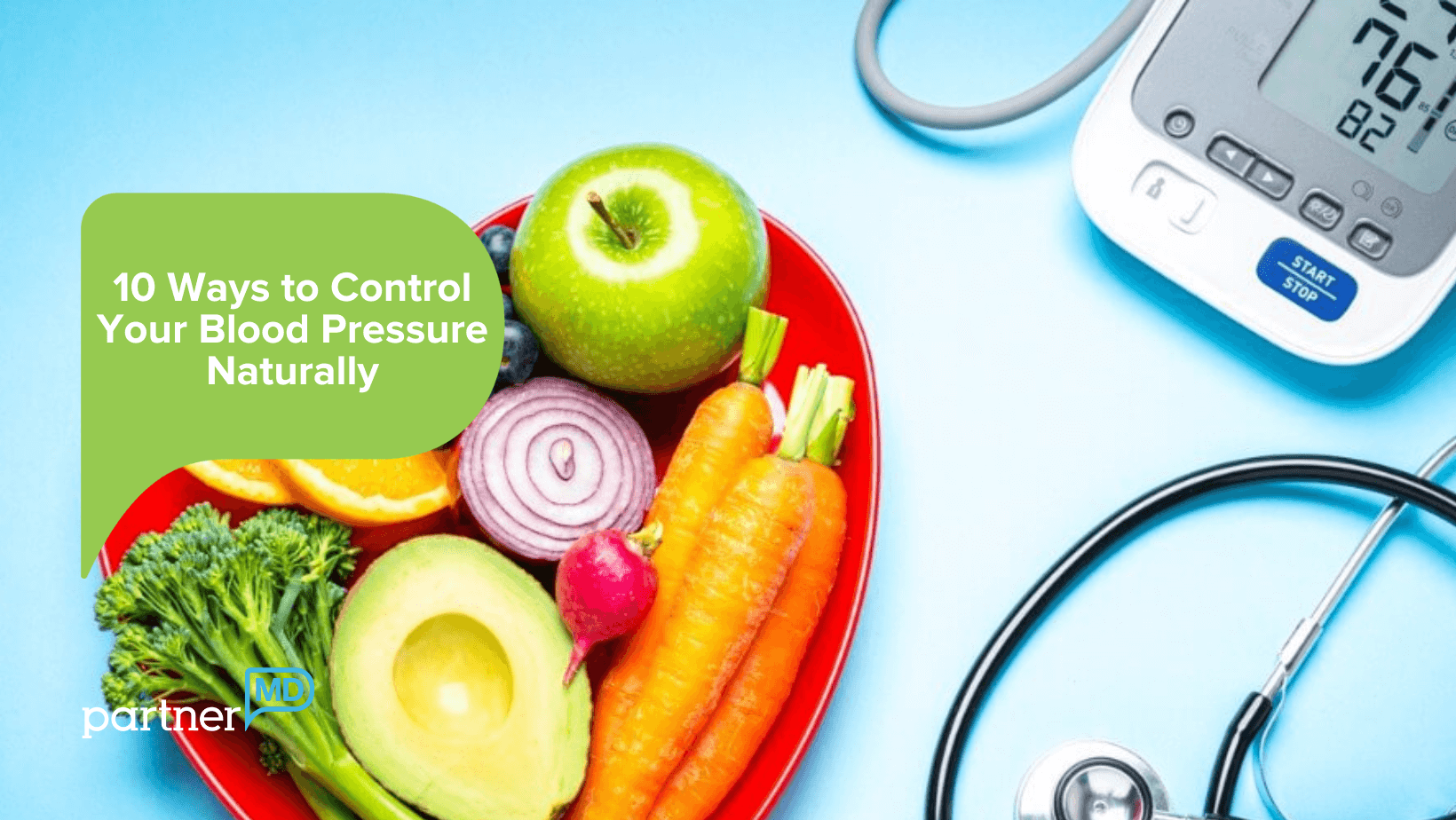Topics:
June 16th, 2022 | 3 min. read

Today, I'd like to go over some ways to help control and lower blood pressure naturally. There are a number of diet and lifestyle factors that can have a big impact here, and I'm going to go over 10 today.
These are things you can try on your own at home or that you can come in and work with a health coach on if you have further questions or if you get stuck.
Starting with number one, probably the most important is to control your intake of refined sugar and carbohydrates.
Insulin and blood sugar can contribute in a big way to the development of hypertension, so if you do have carbs, you want to stick to the whole food variety, things like potatoes, sweet potatoes, and fruit instead of refined grains and sugars.
If you do have carbs, you also want to match them to your activity levels. If you're on the more sedentary side, you want to have fewer carbs. If you're more active, exercise more often, are more athletic, you can probably get away with having more.
Number two, increase your intake of minerals. Minerals mean potassium, calcium, and magnesium, especially. I would challenge and encourage you to get these from whole foods, wherever possible, meaning unprocessed real foods that you would find in the fruit and vegetable aisle.
For potassium, this looks like white potatoes, bananas, tomatoes, and avocado.
Calcium's going to be dairy products, bone-in fish, nuts and seeds, and dark leafy greens.
And for magnesium, you'll be looking at pumpkin seeds, almonds, dark leafy greens, and some dark chocolate even, which I'm sure people are happy to hear that.
If you don't have a problem digesting dairy, it's definitely worth including in your diet, not only for the calcium but for vitamin K2, which has been shown to be a very important nutrient in managing cardiovascular disease risk.
Omega-3 fats found in fish have been shown to reduce hypertension and cardiovascular disease. We're looking at sardines, salmon, halibut, trout, tuna, anchovies and whitefish. You can also supplement here — find a high-quality fish oil supplement — but again, it's always better to get nutrition from real foods, because you're getting a lot of vitamins, minerals, and micronutrients with the fish, too.
Certain types of tea have been shown to be effective at lowering blood pressure. Some examples here are green tea, Oolong tea, hibiscus, and hawthorn tea.
Aim for two to three cups a day with a variety of teas. That can be helpful.
Beets are high in nitrate, which has been shown to increase nitric oxide levels in the blood, which then causes vasodilation, which then lowers blood pressure.
Beets are a great option if you like the taste. And even if you don't, I would encourage you to give it a try anyway, because you might change your mind.
UV radiation can help produce nitric oxide, so a similar mechanism as the beets, which then causes vasodilation.
Again, you don't want to have too much. You don't want to get a sunburn. But getting 20 to 30 minutes of sun exposure a day, depending on your skin type and the time of the year, can definitely be helpful to get some of the blood-pressure-lowering effects.
T in nature, time with friends and family, prioritizing a good work-life balance, and also considering some resources like meditation or guided deep breathing can be helpful with stress.
Stress is a big contributor to blood pressure, and all disease outcomes, really. It's important not to forget about it. It really does contribute to any negative chronic disease outcome.
Short sleep duration and poor sleep quality have been shown to increase the risk of high blood pressure. Sleep apnea is also associated with high blood pressure.
All types of exercise, from moderate to light to vigorous, have all been shown to have positive effects on blood pressure. You can do whatever you enjoy, really. Weight lifting, cycling, and walking, it's all helpful.
Also, a standing desk, spending less time sitting, is a good idea. I have a standing desk right now. They're great. And so switching to that and trying to get the 10,000 steps a day, roughly. It doesn't have to be 10,000 exactly, but being more active in general, will help with the blood pressure.
PartnerMD memberships include access to our members-only wellness program, Wellness University, which delivers more than 70 physician-approved courses and certified health coaching targeting the 4 areas most critical to your health, including stress and sleep, brain health, nutrition, and strength and mobility.
Health coaching is included in the cost of your PartnerMD membership. Check out these resources for more information:
Ready to get started with a health coach? Call your local office or reach out through the Patient Portal.
Topics: